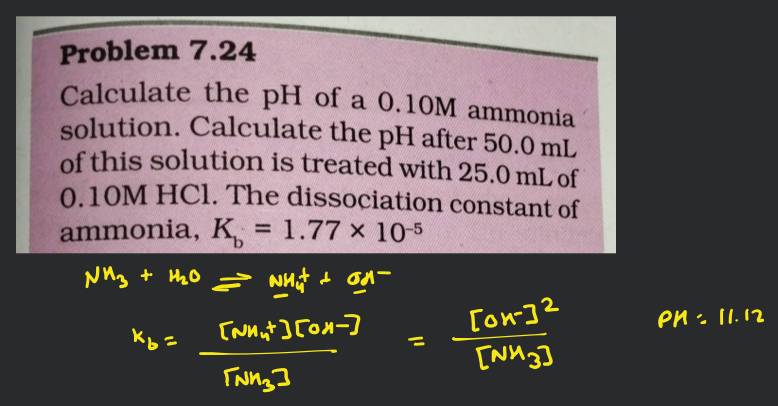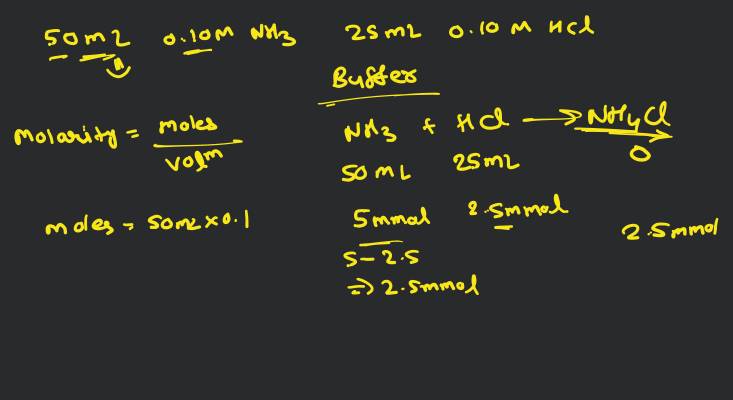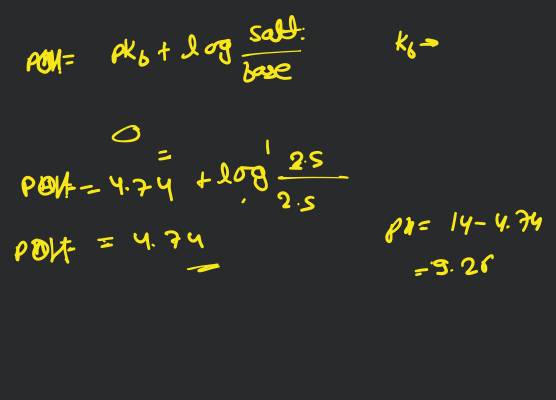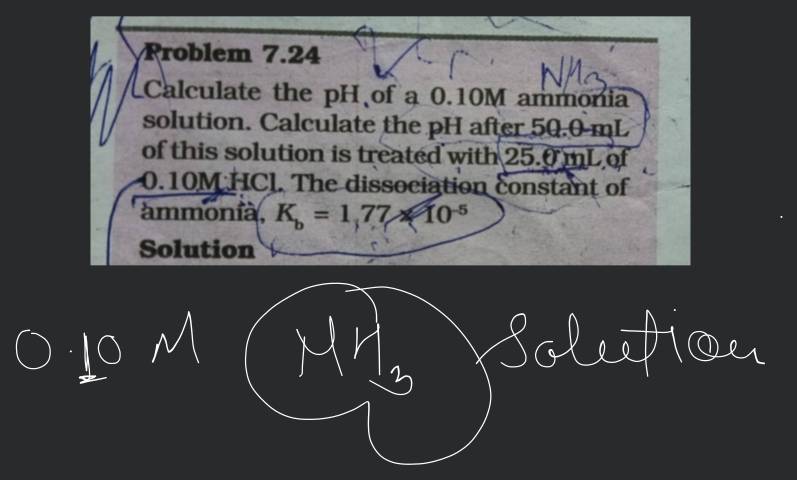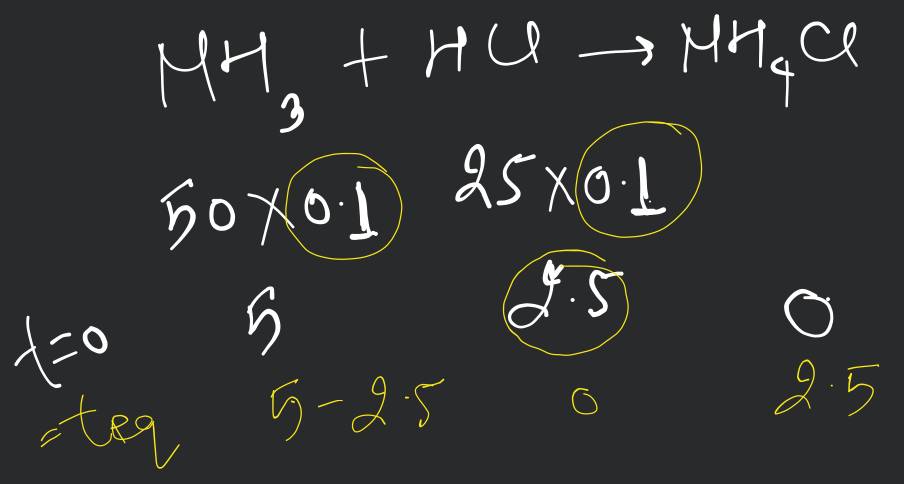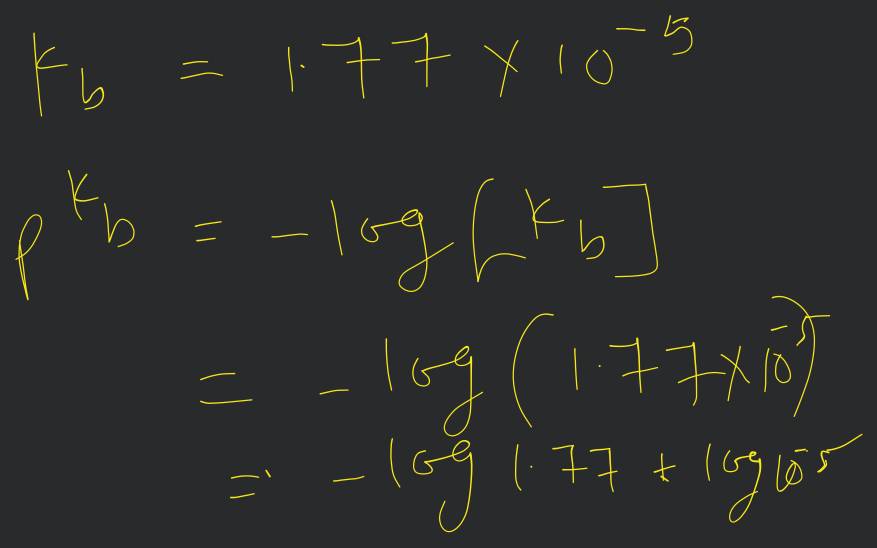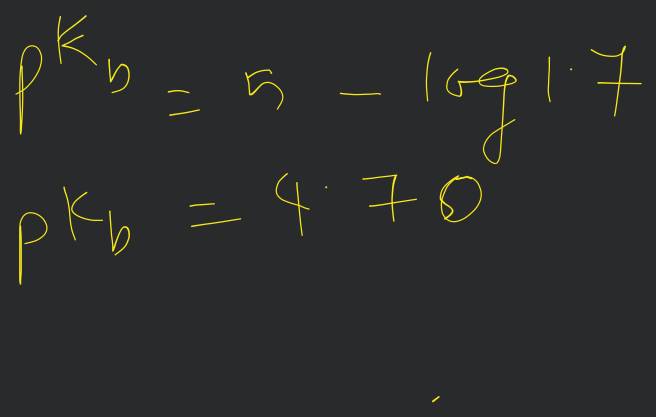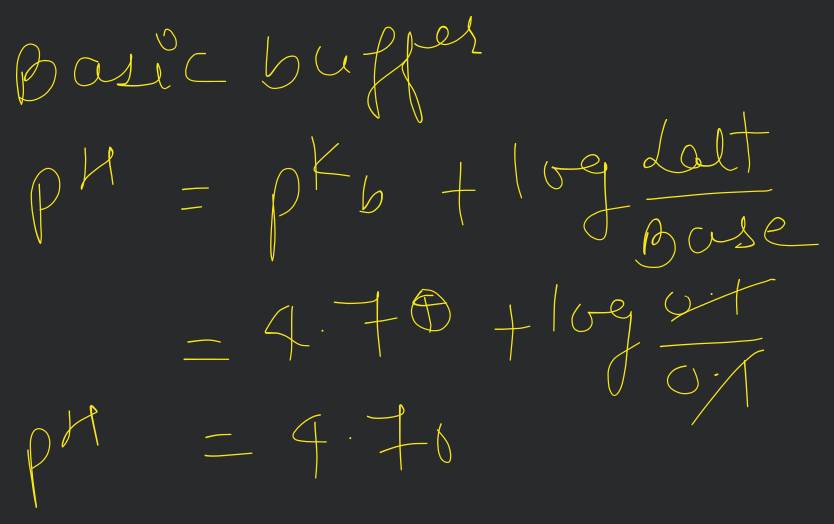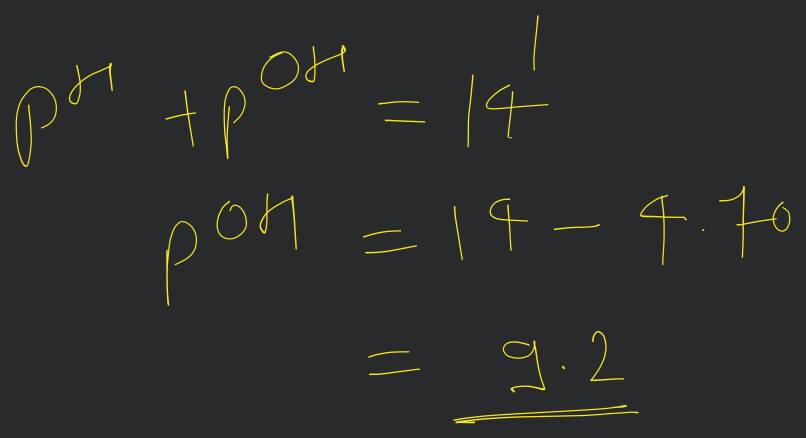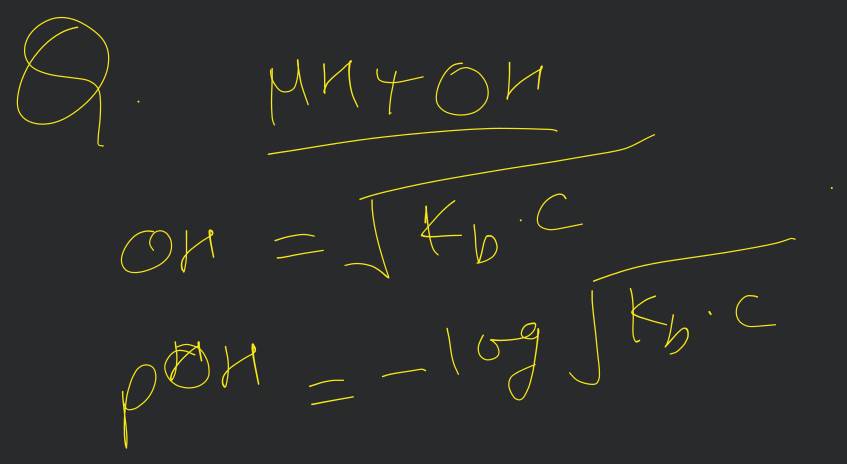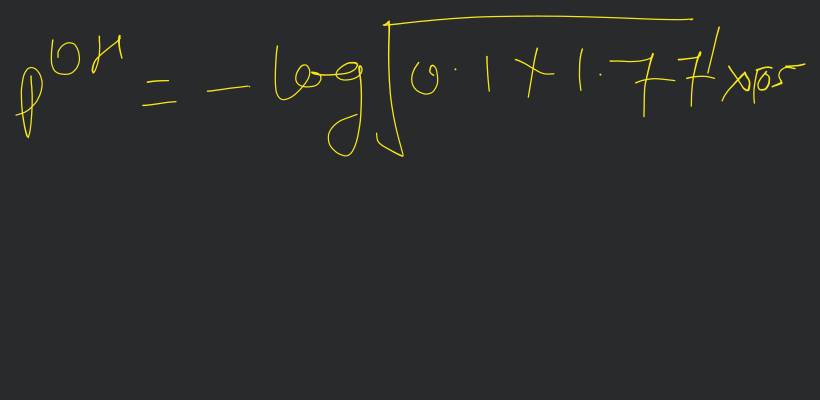Question
Medium
Solving time: 3 mins
Calculate the of a ammonia solution. Calculate the after of this solution is treated with of . The dissociation constant of ammonia,
Found 7 tutors discussing this question
Discuss this question LIVE
11 mins ago
 Text solution
Text solution Verified
Verified
In the addition of 25 mL of 0.1 M HCl solution (i.e., 2.5 mmol of HCl) to 50 mL of 0.1M ammonia solution (i.e., 5 mmol of ), 2.5 mmol of ammonia molecules are neutralized. The resulting 75 mL solution contains the remaining unneutralized 2.5 mmol of molecules and 2.5 mmol of
The resulting 75 mL of solution contains 2.5 mmol of ions (i.e., 0.033 M) and 2.5 mmol (i.e., O.033M) of unneutralised : molecules. This ; exists in the equilibrium:
The final solution after neutralisation already contains ions (i.e. ), thus total concentration of ions is given as:
As is small, and .
We know,
Thus,
Hence,
Was this solution helpful?
56
Share
Report
Filo tutor solutions (9)
Learn from their 1-to-1 discussion with Filo tutors.
10 mins
Uploaded on: 1/15/2023
Was this solution helpful?
118
Share
Report
11 mins
Uploaded on: 4/20/2023
Was this solution helpful?
142
Share
Report

One destination to cover all your homework and assignment needs
Learn Practice Revision Succeed

Instant 1:1 help, 24x7
60, 000+ Expert tutors

Textbook solutions
Big idea maths, McGraw-Hill Education etc

Essay review
Get expert feedback on your essay

Schedule classes
High dosage tutoring from Dedicated 3 experts
Practice more questions from Chemistry Part-I (NCERT)
Q1
Determine the degree of ionization and of a of ammonia solution. The ionization constant of ammonia can be taken from Table 7.7. Also, calculate the ionization constant of the conjugate acid of ammonia.
Q2
Calculate the of a ammonia solution. Calculate the after of this solution is treated with of . The dissociation constant of ammonia,
Q3
The of acetic acid and of ammonium hydroxide are and respectively. Calculate the of ammonium acetate solution.
View allPractice questions from Chemistry Part-I (NCERT)
Question 1
Medium
Views: 6,052
Question 2
Medium
Views: 6,383
Question 3
Medium
Views: 5,832
Question 4
Medium
Views: 6,231
Practice more questions from Equilibrium
Practice questions on similar concepts asked by Filo students
Question 2
Views: 5,651
Question 3
Views: 5,846
Question 4
Views: 5,240


Stuck on the question or explanation?
Connect with our Chemistry tutors online and get step by step solution of this question.
231 students are taking LIVE classes
| Question Text | Calculate the of a ammonia solution. Calculate the after of this solution is treated with of . The dissociation constant of ammonia, |
| Updated On | Apr 20, 2023 |
| Topic | Equilibrium |
| Subject | Chemistry |
| Class | Class 11 |
| Answer Type | Text solution:1 Video solution: 9 |
| Upvotes | 992 |
| Avg. Video Duration | 9 min |



